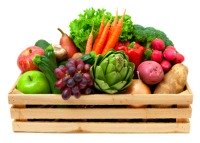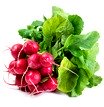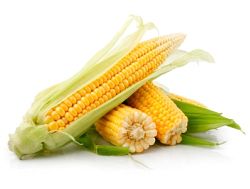Calories in Vegetables —
Sometimes not that many
Calories in vegetables—do you really need to care? Probably only if your doctor says so, or if you're trying to lose weight. Then, it will be genuinely useful to know how artichokes, for example, fare against string beans or perhaps asparagus. Although all three are green, they do vary in their caloric content. And, as you probably guessed, a medium artichoke leads the trio at 60 calories; green beans and asparagus tie at 20 to 25 each for a three-quarter cup (the beans) and 5 spears (the asparagus).

But, as with so much else in
life, your veggies' calorie load will often relate to your own actions. If you load up those green
beans with butter and/or pesto and sliced almonds, for example, the calorie count
rises considerably. Ditto, for the asparagus
when it wears either butter or hollandaise sauce...and the artichoke served with tarragon butter.
So, yes: by all means pay attention to the calorie
counts of the veggies you eat, but also factor in the calories of
whatever "enhancements” you lay on.
Calories in Some Common Veggies
As for the specific calories in vegetables, here’s a short list showing the caloric count of some common veggies:
- Alfalfa sprouts (serving) 7-10
- Arugula (1½ cups chopped) 10
- Asparagus (5 spears) 25
- Beets (half-cup sliced) 37
- Bell pepper (1 medium) 30
- Bok choy (1/2 head, raw) 50
- Broccoli (3 stalks, raw) 32
- Brussels sprouts (4 sprouts) 40-50
- Butternut squash (1 cup cubed, raw) 60
- Cabbage (1 cup chopped or shredded) 22
- Carrot (1 medium) 35
- Cauliflower (1/4 head) 35
- Celery (2 medium stalks) 20
- Collard greens (2 cups raw) 25
- Corn (1 cup kernels) 90
- Cucumber (1 medium) 45
- Eggplant (1 cup cubed) 20; (1 medium whole) 140
- Endive (1 head) 10
So—not that many calories to worry about with a lot of veggies you'll encounter...
Calorie Counting Giving You a Headache?

A quicker way to look at a veggie’s fattening power is to consider its
carbohydrate load. Generally speaking, the lower the starchiness, the
fewer the carbs. So, most veggies in the green-and-leafy category will
likely be kind to your waistline. (See a List of Vegetables Green and Leafy.)
Less kind will be the root veggies:
beets, potatoes, yams, yucca, parsnips, carrots, etc. Take care also
with winter squashes, and with corn and green peas (although pea pods
are somewhat more benign). Best to eat all these sparingly when trying
to shed a few pounds.
Okay?
And one final note: whether your veggies be green and leafies, root, or
something in between, handle the butter, sauces, and groovy nuts or
seeds with a fairly light hand. For the most part, those are where the
hazards can often lie when it comes to a vegetarian diet.
To find the caloric values for every veggie or other food you’ve ever heard of, and then some, Google would be one good place to start. There you can likely find an online calorie counter, or an App to suit your needs. Meanwhile, why not have a kumquat or two, each of which will "cost" you a mere 13 calories. Or perhaps some raw turnips (with lemon juice and a little black pepper): 36 for an entire cup of cubes!
Please understand that the material at this site is NOT medical advice, as I am neither doctor nor nutritionist. What I am is merely someone who's lived successfully on a vegetarian diet for many decades...and I transitioned from omnivore to vegetarian gradually. Do check with your doctor, though, if you're considering big changes to your own diet. Also, be sure to find a dependable source of Vitamin B12.
Living Vegetarian the Easy Way
Copyright 2010-2024. Lynda Edwards. All rights reserved.



